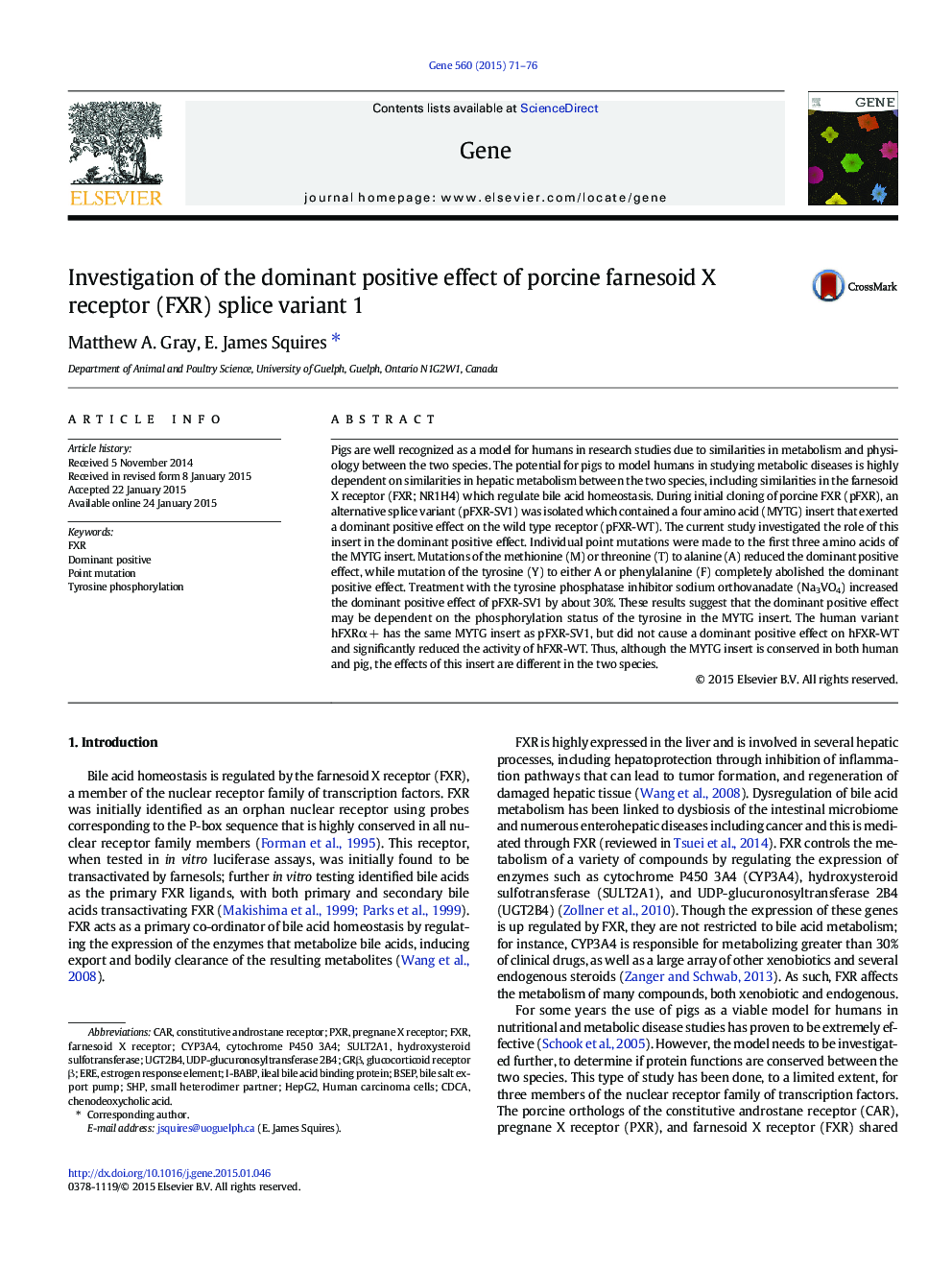| کد مقاله | کد نشریه | سال انتشار | مقاله انگلیسی | نسخه تمام متن |
|---|---|---|---|---|
| 5905490 | 1159898 | 2015 | 6 صفحه PDF | دانلود رایگان |
عنوان انگلیسی مقاله ISI
Investigation of the dominant positive effect of porcine farnesoid X receptor (FXR) splice variant 1
دانلود مقاله + سفارش ترجمه
دانلود مقاله ISI انگلیسی
رایگان برای ایرانیان
کلمات کلیدی
HepG2glucocorticoid receptor βI-BABPSULT2A1UGT2B4GrβPXRFXRBSEPCYP3A4SHPCDCAEREfarnesoid X receptor - Farnesoid X گیرندهPoint mutation - جهش نقطهHuman carcinoma cells - سلول های سرطانی انسانcytochrome P450 3A4 - سیتوکروم P450 3A4small heterodimer partner - شرکای کوچک همجنسگراestrogen response element - عنصر پاسخ استروژنTyrosine phosphorylation - فسفوریلاسیون تروفوزینCAR - ماشینHydroxysteroid sulfotransferase - هیدروکسیستروئید سولفوترانسفرازileal bile acid binding protein - پروتئین متصل به اسید صفراوی ایلئالBile salt export pump - پمپ صادرات نمک صفرconstitutive androstane receptor - گیرنده آندروستان پایدارPregnane X receptor - گیرنده پیش گران X
موضوعات مرتبط
علوم زیستی و بیوفناوری
بیوشیمی، ژنتیک و زیست شناسی مولکولی
ژنتیک
پیش نمایش صفحه اول مقاله

چکیده انگلیسی
Pigs are well recognized as a model for humans in research studies due to similarities in metabolism and physiology between the two species. The potential for pigs to model humans in studying metabolic diseases is highly dependent on similarities in hepatic metabolism between the two species, including similarities in the farnesoid X receptor (FXR; NR1H4) which regulate bile acid homeostasis. During initial cloning of porcine FXR (pFXR), an alternative splice variant (pFXR-SV1) was isolated which contained a four amino acid (MYTG) insert that exerted a dominant positive effect on the wild type receptor (pFXR-WT). The current study investigated the role of this insert in the dominant positive effect. Individual point mutations were made to the first three amino acids of the MYTG insert. Mutations of the methionine (M) or threonine (T) to alanine (A) reduced the dominant positive effect, while mutation of the tyrosine (Y) to either A or phenylalanine (F) completely abolished the dominant positive effect. Treatment with the tyrosine phosphatase inhibitor sodium orthovanadate (Na3VO4) increased the dominant positive effect of pFXR-SV1 by about 30%. These results suggest that the dominant positive effect may be dependent on the phosphorylation status of the tyrosine in the MYTG insert. The human variant hFXRα + has the same MYTG insert as pFXR-SV1, but did not cause a dominant positive effect on hFXR-WT and significantly reduced the activity of hFXR-WT. Thus, although the MYTG insert is conserved in both human and pig, the effects of this insert are different in the two species.
ناشر
Database: Elsevier - ScienceDirect (ساینس دایرکت)
Journal: Gene - Volume 560, Issue 1, 10 April 2015, Pages 71-76
Journal: Gene - Volume 560, Issue 1, 10 April 2015, Pages 71-76
نویسندگان
Matthew A. Gray, E. James Squires,